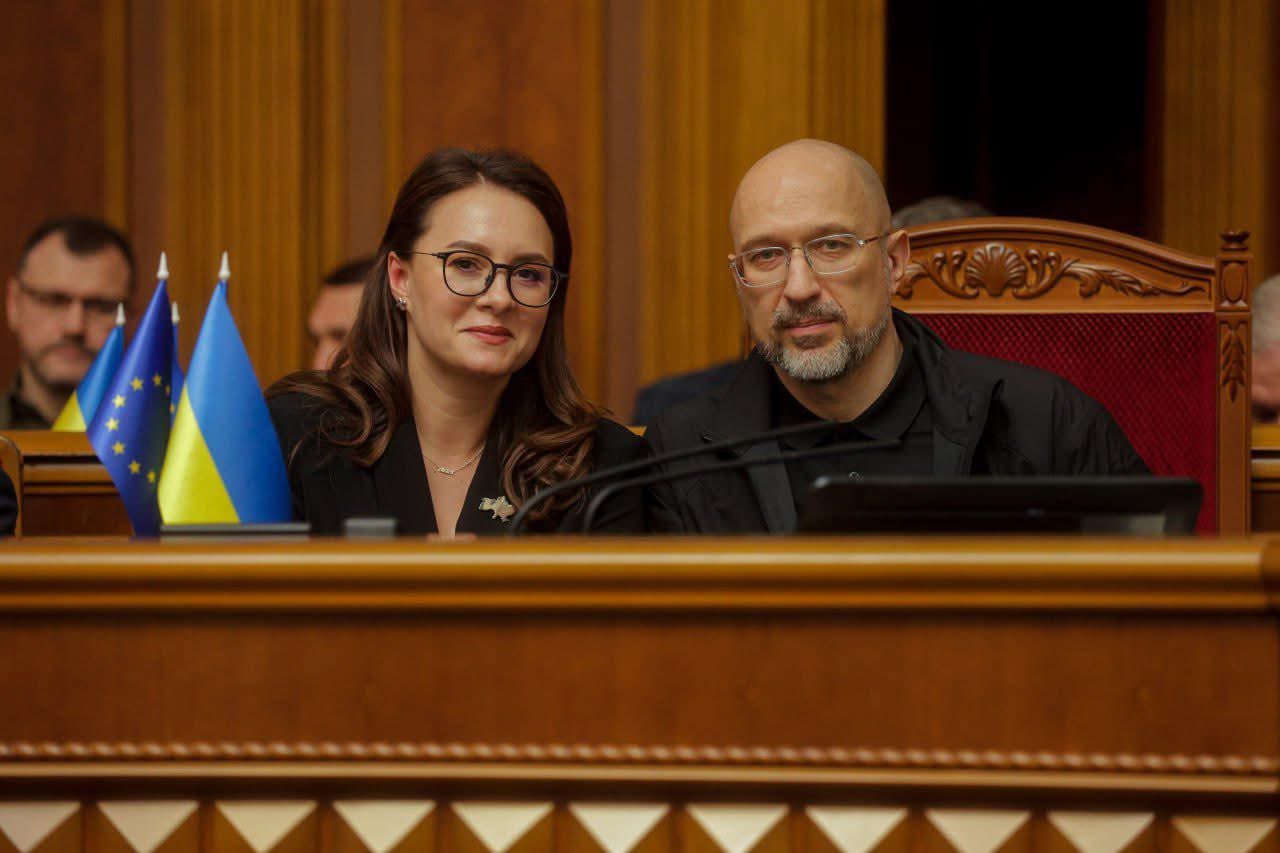Ukraine nationalized its way out of crisis—now it can’t stop making money

Every time I look at my bank card, I smile. Not because I have so much money, but because the bank is called PrivatBank.
A “private” bank. Except it’s not. Founded in 1992 by future oligarchs Ihor Kolomoyskyi, Hennadii Boholiubov, and Serhiy Tihipko, it was nationalized in 2016 after it emerged that just 5% of its loans had gone to stable, well-known companies. The rest went to offshores or hastily formed shell companies.
Since then, PrivatBank has stayed in state hands. So every time I make a payment, I’m making a small contribution to the state budget.
From market reform to wartime statism
Despite the fate of PrivatBank, before Russia’s full-scale invasion, Ukraine had been moving slowly but steadily toward a leaner government. Some of the old Soviet-style giants had been cut down to size. The farmland market had opened. Selling minority stakes in key state-owned firms was on the table.
Then the full-scale war started—and changed everything. Over the past three years, Ukraine’s public sector has grown to its largest size since the 1990s.
By the third quarter of 2024, the National Bank of Ukraine reported that state-owned banks controlled 53% of all banking assets and held over 60% of all retail deposits.
Government spending has grown dramatically, too: Ukraine’s Finance Ministry announced the 2025 state budget allocates 26.3% of GDP to defense and security. The state now controls not only banking and defense production but also energy and much of the digital economy.
It’s easy to see why—survival trumps ideology—but without a clear plan for scaling back later, this state-heavy approach could become a problem in itself.
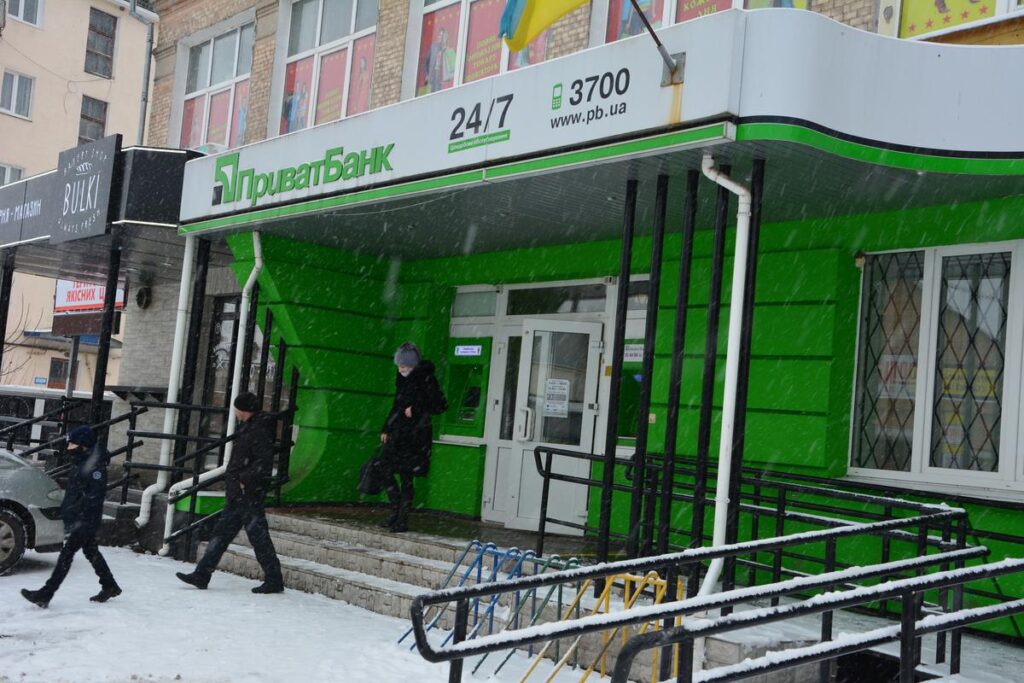
Geese that lay golden eggs
Ukraine’s banks have earned nearly UAH 255 billion (€6 billion) since the start of the full-scale war, Ukrainian Business News calculated.
In 2024 alone, Opendatabot found banks made a record UAH 104 billion (€2.5 billion) in net profits—20% more than in 2023—and paid UAH 83.7 billion (€2 billion) in taxes on those profits, almost twice as much as the year before.
Seven state-owned banks made UAH 67.2 billion (€1.6 billion), accounting for 65% of the sector’s total profits.
PrivatBank alone made up 39% of all banking profits in 2024 and contributed UAH 40.9 billion (€980 million) in taxes—almost half the total for the sector.
International funding advantage
Part of this success comes from access to cheap international loans. The country’s second-largest bank by assets after PrivatBank, Oschadbank, for instance, uses funds from the European Bank for Reconstruction and Development to finance solar and wind energy projects that help stabilize the grid—often at below-market rates. That gives state-owned banks a big advantage.
Even the IMF has taken notice. In its June 2025 report, the International Monetary Fund warned that expanding state control in banking should only happen when necessary for stability or national security—and only during martial law. It also advised Ukraine to reduce state ownership once the war ends.
Strategic sectors under state command
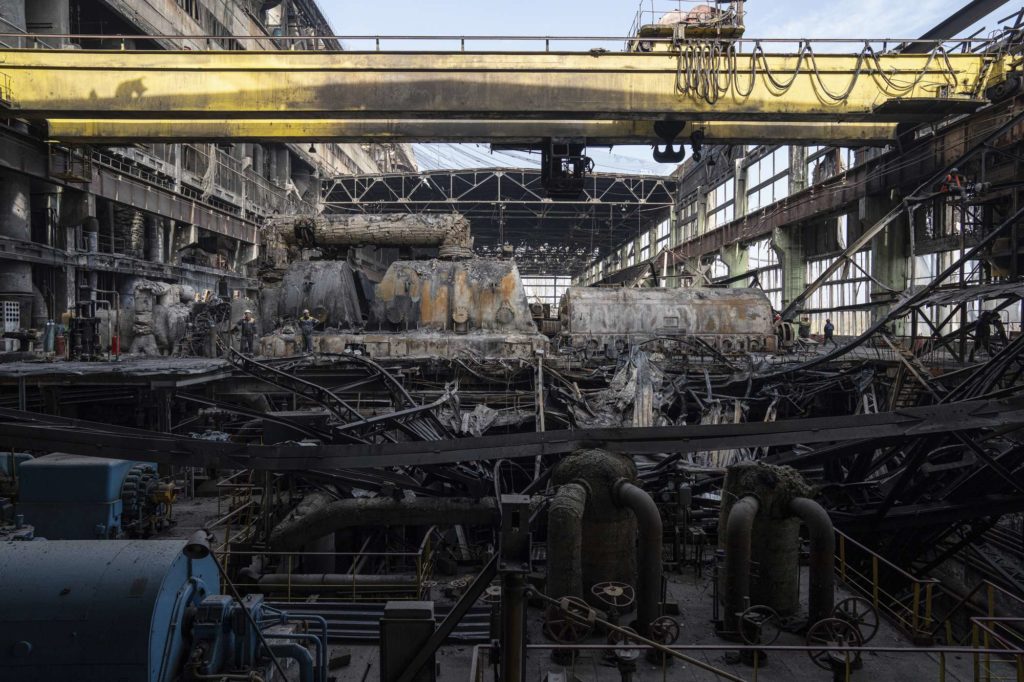
Banking isn’t the only sector under government control. In energy, the state-run company Ukrenergo keeps the grid running despite regular Russian attacks—allowing every other part of the economy, from heavy industry to small service providers, to continue operating.
Because of this, even private households can maintain a semblance of normality under wartime conditions. Ukrenergo does this with the help of low-interest loans from European donors.
Critical infrastructure rebuilding
Oschadbank, for instance, channels donor finance into 30-megawatt battery farms and hybrid solar-wind parks—critical infrastructure the country urgently needs more than ever.
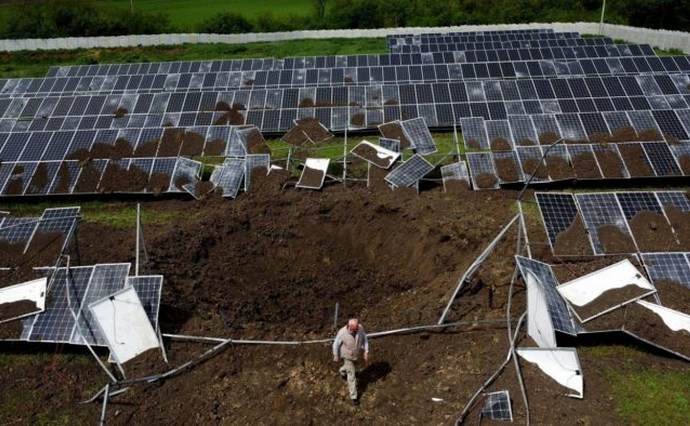
Russian forces have destroyed 70% of Ukraine’s available generation capacity since the start of the full-scale war, and the key to keeping the lights on lies in decentralization: smaller, distributed energy sources are harder to hit and easier to repair than large centralized power plants.
In defense, the old Ukroboronprom group has been turned into a new company called Ukrainian Defense Industry. The Stockholm International Peace Research Institute reported its revenue rose 69% in 2023 to $2.2 billion (€2 billion).

Tech sector under special regime
Agriculture is still mostly private, but the World Bank documented how the state controls grain exports and fuel allocation across the country.
Even the IT sector works under a special government regime. The Diia City programme—a virtual free economic zone that offers a flat 9% profit tax—now includes more than 1,640 companies and nearly 100,000 tech professionals, according to Ukraine’s Ministry of Digital Transformation.
Controversial seizures
Not all government takeovers are popular. One high-profile case was the seizure of IDS Ukraine, which makes the beloved Morshynska mineral water. Interfax Ukraine reported that the entire company was confiscated because of minority Russian ownership.
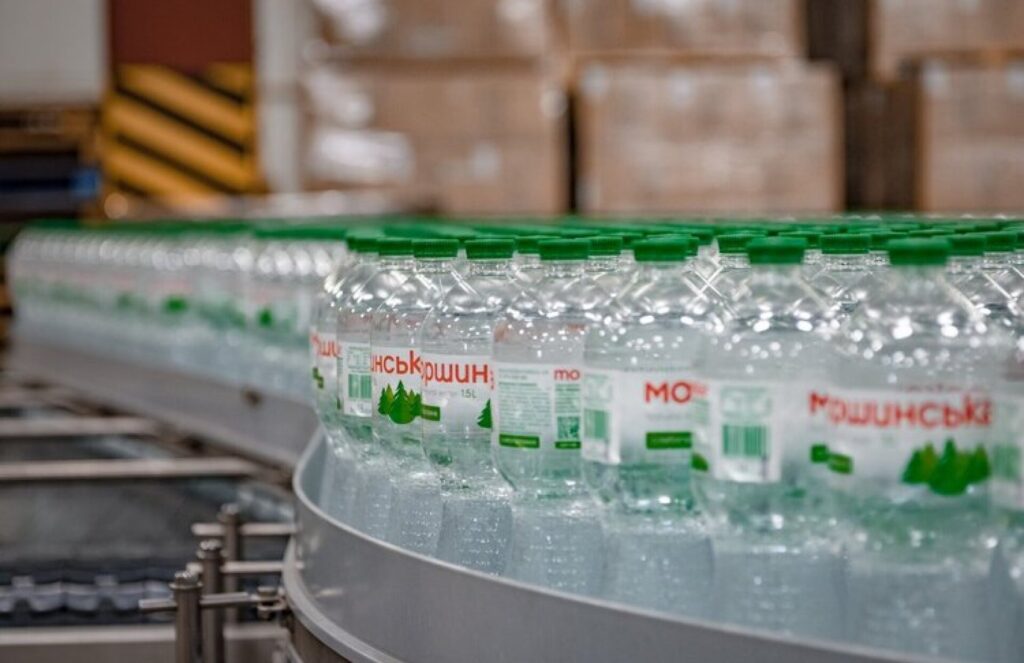
Critics say that such moves, while understandable during wartime, create risks for private business—especially when a brand controls 40% of the market.
Moves like this can shake consumer confidence, but more critically, they deter potential investors. Who would risk their capital in a country where an entire company might be seized simply because another shareholder has a questionable ownership structure?
These actions also raise uncomfortable questions: are such practices compatible with democracy? Is Ukraine truly the democratic state it claims—or aspires—to be?
Missing exit strategy
All things considered, Ukraine’s wartime economy has so far held up pretty well. The Kyiv School of Economics forecast GDP growth around 3% this year, inflation dropped below 10% in early 2025, and the banking sector is stable and profitable.
But all that success has its downsides. A major one is that state-owned companies now generate so much revenue that political leaders might be reluctant to give them up.
Talk of privatization has gone quiet. The Ministry of Economy has mentioned the idea of selling small stakes in state companies after the war, but there’s no clear plan or timeline. And most foreign investors remain hesitant—especially those who aren’t prepared to take big risks.
At the same time, Ukraine’s international allies are growing impatient. The IMF warns that permanent state dominance is bad for competition.
Brussels, eyeing EU accession, wants governance standards that private capital can trust. Kyiv faces a tightrope: keeping scarce capital flowing while signaling that the state’s wartime reach is temporary.
Undoing the emergency state
There are ways forward. One idea is to introduce “sunset clauses”—laws that would require the government to reduce its ownership in major companies to less than 25% within five years of the end of martial law, unless parliament votes to delay.
Another idea is to issue war bonds that could later be converted into shares in state firms. That would help prepare these companies for privatization by spreading ownership more broadly.
The oligarch problem
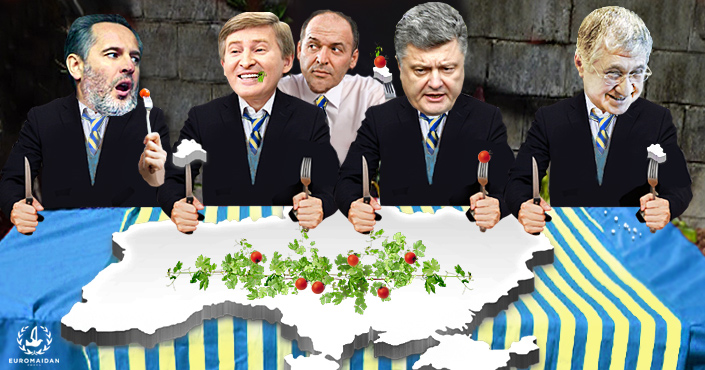
Still, even that comes with challenges. Ukraine’s economy is still influenced by a small group of powerful oligarchs. The government has tried to reduce their power by limiting “vertical integration”—a polite way of saying monopolistic control—but progress is slow.
Selling off large, profitable state companies could risk strengthening the old oligarchs or creating new ones.
Above all, Ukraine needs a clear strategy. Without it, the strong wartime state could become a barrier to post-war recovery.
When even a “private” bank becomes a symbol of government control, it’s time to ask: where does wartime necessity end, and long-term dependency begin?
Whether the new government will chart a different course—or simply manage the status quo—remains an open question.
Key financial figures
| Total profit by Ukrainian banks during 3.5 years of war | UAH 255 billion (€6 billion) |
| 2024 profit of the banking sector | UAH 104 billion (€2.5 billion) |
| 2024 profit taxes paid by banks | UAH 83.7 billion (€2 billion) |
| Share of profits from 7 state-owned banks | UAH 67.2 billion (€1.6 billion) |
| PrivatBank’s tax contribution in 2024 | UAH 40.9 billion (€980 million) |
| Defense and security spending in 2025 | 26.3% of GDP |
| Share of banking assets held by state-owned banks (Q3 2024) | 53% |
| Share of retail deposits held by state-owned banks (Q3 2024) | 60% |
| Projected GDP growth in 2025 | ~3% |
